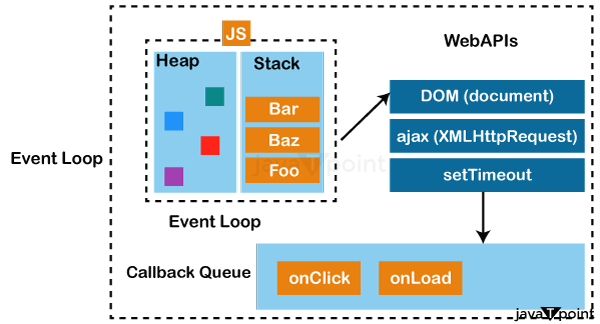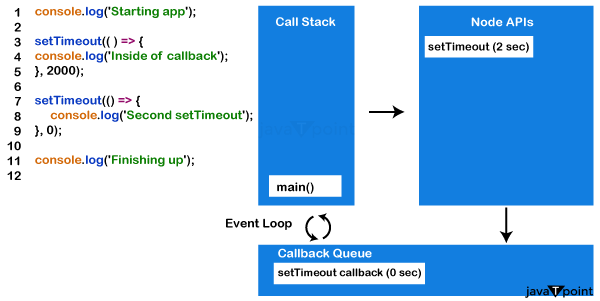Callback QueueUnderstanding Callback QueueA Callback Queue or an event queue is a data structure used in asynchronous programming. It's a queue of callback functions scheduled for execution in a specific order. These callbacks are often associated with events, user interactions, or responses from external resources. Asynchronous ProgrammingAsynchronous programming allows a program to continue to run other codes while waiting for an already running task to complete. The running task is executed in the background while the rest of the code is prioritised. Languages like JavaScript, Python and C# use asynchronous methods for compiling codes and running tasks. The feature enabling asynchronous programming in these languages is called a callback function. Event LoopThe event loop is a crucial component of modern programming that enables the execution of multiple tasks concurrently. It works by continuously checking for new events to be processed and handling them as they arrive without blocking the execution of other operations. This increases efficiency and faster task completion, making it an essential feature in many programming languages, including JavaScript. 
The event loop monitors the Callback Queue and executes the callbacks when the call stack is empty. It ensures that callbacks are executed in the order they were added, preventing race conditions, and maintaining the integrity of your program. UsageApplying this algorithm to JavaScript: Output: Starting app Finishing up Second setTimeout Inside of callback 
Callback QueueA Callback Queue operates in conjunction with the event loop. When an asynchronous task is completed, its associated callback function is placed in the Callback Queue. The callback queue functioning works on the FIFO principle of First In, First Out. These callbacks are executed individually in the order they were added to the queue, ensuring a smooth and organised execution flow. In JavaScript programming, functions are a vital aspect of the language. They allow developers to execute instructions to accomplish a specific task. When instructions require using data from outside sources, like web apps or databases, the program quietly requests that data while continuing to run. Once the data is collected, it's sent back to the program for further work. This is called a callback. By utilising callbacks, developers can create efficient programs that gather data seamlessly without interrupting the program's flow. Purpose of using Callback QueueEvent Handling Callback queues are used to handle events like user input and system notifications. They are the functions that respond to specific events by organising them in a queue. This helps the system to ensure that the processes are executed in the order they were received. This helps to handle events efficiently and is essential for event-handling purposes. Asynchronous Operations Asynchronous tasks are operations that do not occur sequentially and typically involve waiting for an event to happen before they can be completed. Examples of such tasks include I/O operations, network requests, or timers. Callback functions are often used to handle the results when performing these tasks. These callbacks are placed in a queue after the asynchronous operation is complete, allowing them to be executed once all other tasks in the line have been completed. This allows for efficient handling of asynchronous tasks and ensures that they do not interfere with additional operations in the system. Concurrency and Parallelism In complex computing environments that rely on multiple threads or event-driven architectures, callback queues play a vital role in managing the order and timing of task execution. By organising tasks and ensuring that they are executed, controlled and efficiently, callback queues help avoid errors and optimise system performance. Without such mechanisms, the system may become unstable, leading to unpredictable behaviour and degraded performance. Therefore, callback queues are essential for developers and system administrators who must manage complex computing environments. Steps of How Callback Queues Work
|
 For Videos Join Our Youtube Channel: Join Now
For Videos Join Our Youtube Channel: Join Now
Feedback
- Send your Feedback to [email protected]
Help Others, Please Share










